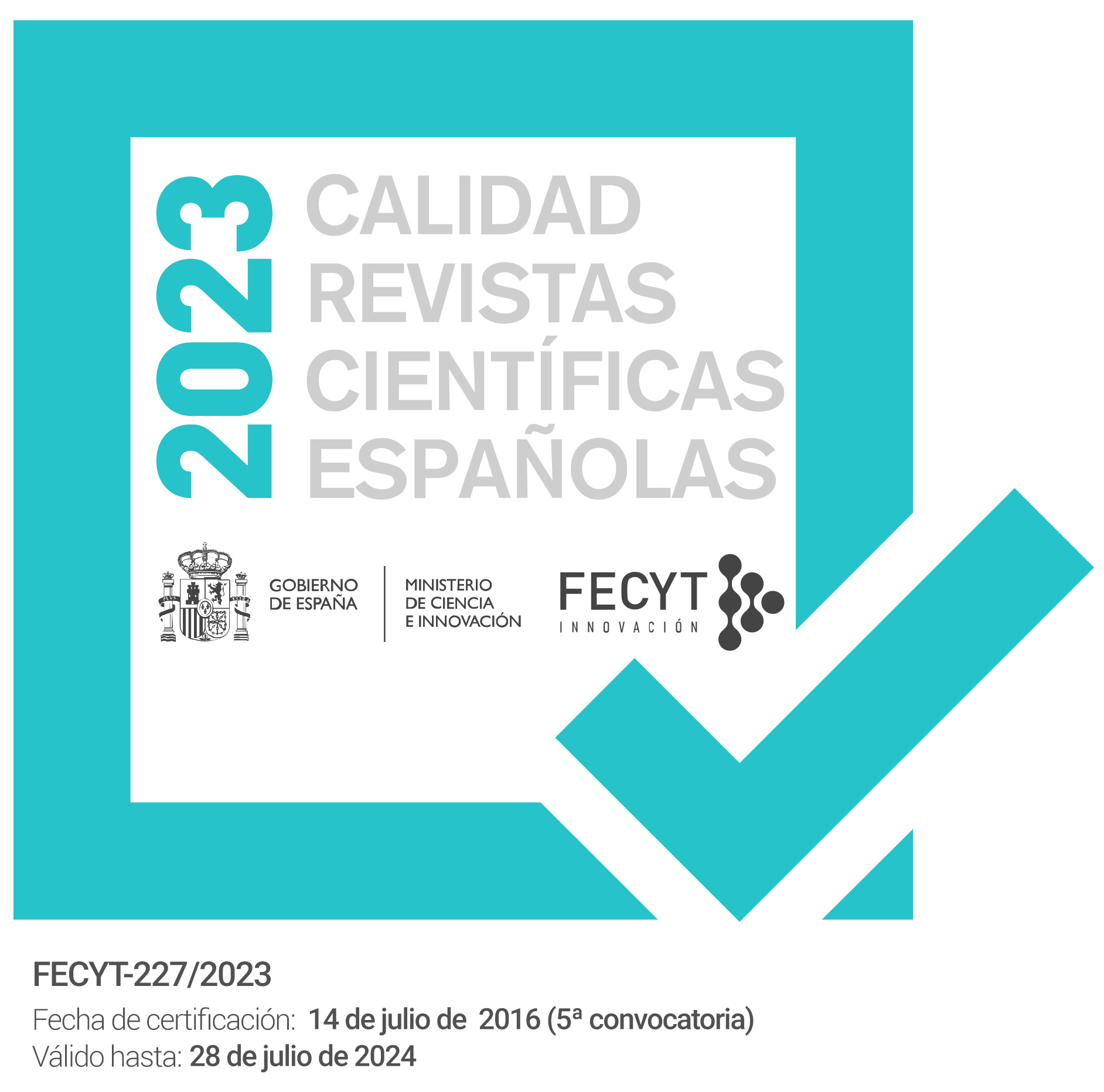Actividad antimicrobiana de Illicium verum Hook. f.
Palabras clave:
Illicium verum, anetol, actividad antimicrobiana, CMIResumen
Entre las diferentes especies de Illicium, Illicium verum Hook.f., conocido vulgarmente como anís estrellado, poseepotentes propiedades antimicrobianas. Los estudios químicos realizados indican que la mayor parte de esta actividadantimicrobiana se debe al anetol [1-metoxi-4-(1-propenil)-benceno] presente en el fruto desecado de esta planta.Ensayos de concentración mínima inhibitoria (CMI) con el anetol aislado, en comparación con un patrón de anetol,indicaron que es efectivo sobre diferentes microorganismos, entre los que se encuentran cepas de bacterias, levadurasy hongos.Descargas
Citas
Wealth of India, vol. 1, Raw Materials. CSIR, New Delhi, India (1948) p 253.
Verghese J. The world of spices and herbs. Spice India 1998; 11: 15-18.
De M, De AK, Sen P, Banerjee AB. Isolation of antimicrobial compounds from star anise. Proceedings of National Conference on Recent Trends in Spices and Medicinal Plant Research, 1998, B-7.
Stricher O, Soldati F, Jhoshi RK. HPLC separation and quantitative determination of capsaicin, dihydrocapsaicin, nordihydrocapsaicin in natural capsaicinoid mixtures and fructus capsici. J Chromatog 1978; 166: 221-231.
De AK, Ghosh JJ). Inflammatory effects of acute and chronic capsaicin treatment on rat paw. Phytother Res 1988; 2: 175-179.
Hufford CD, Funderburk MJ, Morgan JM, Robertson LW. Two antimicrobial alkaloids from heartwood of Liridendron tulipifera L. J Pharm Sci 1975; 65: 789-792.
Sy L, Brown GD. Novel phenylpropanoids and lignans from Illicium verum. J Nat Prod 1998; 61: 987-992.
Kowk LL. Selective isolation of anethole from fructus anisi stellati (star anise) by supercritical fluid extract. Analytical Communic 1996; 33: 175-176.
Curtis OF, Shetty K, Cassagnol G, Peleg M. Comparison of the inhibitory and lethal effects of synthetic versions of plant metabolites (anethole, eugenol, carvacrol, thymol) on a food spoilage yeast (Debaromyces hansenei). Food Biotechnol 1996; 10: 55-73.
Daw ZY. Inhibition of Aspergillus parasiticus growth and aflatoxin production by some essential oils. Chem Mikrobiol Technol Lebensmittel 1994; 16: 129-135.
Karapinar M, Aktug SE). Inhibition of food borne pathogens by thymol, eugenol, menthol and anethole. Int J Food Microbiol 1987; 4: 161-166.
Hosono A. Effect of spice extract on fungal inhibition. Lebensmitte Wissenschoftand Technol 1996; 29: 286-288.
Descargas
Publicado
Cómo citar
Número
Sección
Licencia
Los artículos que se publican en esta revista están sujetos a los siguientes términos en relación a los derechos patrimoniales o de explotación:
- Los autores/as conservarán sus derechos de autor y garantizarán a la revista el derecho de primera publicación de su obra, la cual se distribuirá con una licencia Creative Commons BY-NC-SA 4.0 que permite a terceros reutilizar la obra siempre que se indique su autor, se cite la fuente original y no se haga un uso comercial de la misma.
- Los autores/as podrán adoptar otros acuerdos de licencia no exclusiva de distribución de la versión de la obra publicada (p. ej.: depositarla en un archivo telemático institucional o publicarla en un volumen monográfico) siempre que se indique la fuente original de su publicación.
- Se permite y recomienda a los autores/as difundir su obra a través de Internet (p. ej.: en repositorios institucionales o en su página web) antes y durante el proceso de envío, lo cual puede producir intercambios interesantes y aumentar las citas de la obra publicada. (Véase El efecto del acceso abierto).



















